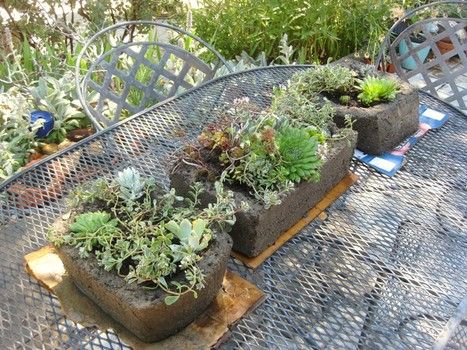How to Make a Stone Trough

As the days shorten, you may be looking for a project to keep you out in the garden while the weather remains inviting. In which case, how about making a ‘stone trough’ for your plants? You can either save it for next year, to use for alpines, or plant it up with dwarf bulbs including rockery narcissi, dwarf iris and crocus, and low-growing spring flowering plants such as primulas, for a beautiful early spring display.
What you need
- An old plastic crate, or polystyrene box of a suitable size
- 13mm mesh chicken wire
- Cable ties
- Cement
- Sharp sand
- Multi-purpose compost (this is a good way to use up old multi-purpose compost at the end of the year).
- Water
Instructions
1) Drill some drainage holes in the bottom of the crate, using an electric drill as this is less likely to crack the plastic.
2) Cut four pieces of chicken wire, each one large enough to cover the inside and outside of one side of the crate or sink, and tuck in underneath, with an overlap of about 8cm. Cover the crate with the chicken wire and secure in place with the cable ties. If you don’t have cable ties, you can use garden twine or wire instead. If using a crate with holes in the side, make sure each tie goes through both layers of chicken wire.
3) Mix the hypertufa. Use one part cement: one part sharp sand: one to two parts dry compost. Mix the dry ingredients well, then add enough water to make a fairly stiff mortar.
4) Wearing gloves, apply the hypertufa to the crate, inside and out, pressing it to the chicken wire, and pushing it through where possible, so you get a solid wall, filling all the gaps in the crate sides. Smooth the surface as you go to help prevent cracks.
5) Leave to harden and then to dry, which usually takes two to three days. Once dry, you can paint the surface with yoghurt to encourage algal growth, but that’s not necessary, as moss is normally pretty quick to establish itself anyway, and once your trough has spent the winter outside, it will look pretty natural!
6) As an alternative to chicken wire, for a solid crate or box, you can use PVA glue, and stick the hypertufa onto that. You’ll either need to do it one side at a time, or be pretty quick about it, as you want the glue to be tacky when you stick the mix onto it.
7) Plant up your trough using plenty of crocks for drainage. The compost you choose to fill the trough will depend on the plants you want to grow, but you can buy compost for most purposes from compost suppliers or garden centres.